Overview of artillery. Part of 2. Hell on wheels
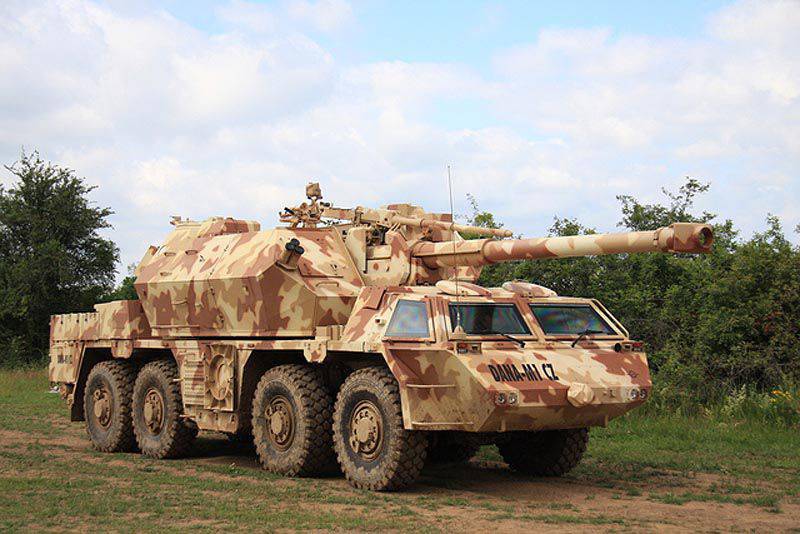
While many manufacturers who developed Soviet-standard artillery caliber systems now rework them to NATO standards, the Czech howitzer Dana M1 still has the caliber 152 mm
The need to improve strategic mobility and tactical mobility on the roads is what has gained special importance in recent asymmetrical combat operations. This led to the development of numerous systems in the two previously mentioned categories. Many have long been in service, while others are at the prototype stage. Many factors influence the development of these systems, not least the financial crisis and the corresponding cuts in defense budgets.
Mounted on the chassis of trucks (hereinafter for the sake of brevity trucks) systems now seem to be the preferred options. India’s decision to start with this type of system in its Artillery Modernization Plan means that all major manufacturers of such systems will do everything possible to get a contract for 814 self-propelled artillery mounts. But to the true wheeled self-propelled howitzers (SG), the market seems to be somewhat cooler due to their higher cost.
Medium caliber self propelled systems
Over the past three decades, perhaps the first country to believe in the advantages of medium-caliber self-propelled wheeled artillery has become Czechoslovakia, whose Dana 152-mm ACS was first noticed by Western observers in 1980. Dana has been produced since 1977, also under the designation ShKH-77; it is based on the cargo chassis of the 8x8 truck with an armored cab mounted on it. The howitzer is still in service with various countries, for example, Poland deployed them in Afghanistan in 2008. After the collapse of the country into the Czech and Slovak Republics, the defense industry of the two new countries inherited the Dana project and used it as a starting solution for developing two completely different projects. Although the Dana system was originally developed by the Slovak side, the name of the Dana project actually passed to the Czechs and the upgraded version developed by Excalibur Army. For its part, the Slovak Konstrukta Defense based on the Dana system developed a Zuzana howitzer.
In the Czech Republic, the evolution of the Dana system did not lead to a system complying with NATO standards. Indeed, the Dana-M1 CZ self-propelled gun, developed by Excalibur Army, is still equipped with an original artillery piece of 152 mm caliber. This choice is mainly due to the need to upgrade at least some of the existing Dana M-600 howitzers, which are still in service with the Czech Republic, Libya, Poland and Georgia, more than 77. Howitzer retrofits mainly focus on mobility, ergonomics, and command and control systems. The power increase was obtained by installing new turbochargers and intercoolers on the original T3-390 engine. This in turn forced the installation of a new 430 Sachs gearbox, and a centralized paging system for the new 14R20 tires was also installed. The driver has a new front armored glass and an improved system of power steering. Independent heating and air conditioning systems were also installed in the cabin. The armament has a new fire control system (LMS) and a new navigation system, which reduces deployment time to the position. The new computer and intelligent terminal commander allow you to prepare for the fire task in advance, and it also reduces the time to prepare for the shooting. A partial howitzer qualification was expected in the 2014 year, but the company did not issue a press release about this.
Konstrukta Defense has developed a new Zuzana 2000 howitzer, replacing the outdated 152-mm artillery of the new 155-mm / 45 manufactured by ZTS Special. 16 of such systems is in service with the Slovak army and more than 12 systems have been sold to Cyprus. The Slovak company is currently offering new versions of Zuzana A1 and Zuzana 2. The difference lies in the power unit: the A1 forced engine MAN D28 76 LF hp is installed on the A453 version. in the same block with the Allison HD 4560 PR transmission, while the Zuzana 2 variant is equipped with a Tatra T3B-928.70 hp 442 engine coupled with a Tatra 10 TS 180 transmission. Unlike the original Zuzana howitzer, the A1 and 2 models have an 152 caliber also from the ZTS Special. The gun shoots all the ammunition of the NATO standard. The conveyor is packed with 40 shells and 40 charges to them, it is possible to place shells in lengths up to 1000 mm. The fuse installer allows you to program electronic projectile fuses before sending. The first minute can be sent out and fired before 6 shots, well, or alternatively 16 shots in the first three minutes. Manual firing is possible with a rate of two shots per minute. There is also a radar to measure the initial speed, which increases the accuracy, Zuzana Al and 2 howitzers are capable of firing in MRSI mode (multiple-round simultaneous impact - simultaneous strikes of several projectiles; the barrel angle changes and all projectiles fired at a certain time interval arrive at the target at the same time). When firing caliber shells with a bottom gas generator maximum range is over 41 km. Another improvement is the auxiliary power unit, which is designed to operate the system when the engine is not running. The howitzer crew is reliably protected in a frontal arc, and the front cabin has a level of protection corresponding to 4. In 2014, shooting and field tests of the Zuzana 2 howitzer were completed and she is currently awaiting the first order from the Slovak Army.
Yugoslavia also developed the M84 Nora A wheeled howitzer, in which the 152 / 45 cannon was mounted on a FAP 2832 truck. At the beginning of 2000's, Yuguimport decided to develop a system designed for foreign markets. The model Nora B-52 K0 was therefore armed with an 155-mm / 52 cannon mounted in an open turret. This was followed by the K1 variant, which was mainly distinguished by the Russian KAMAZ 63501 8x8 chassis (replacing the original Serbian FAP 2832 chassis), a semi-protected calculation tower, with a fully automatic loader system with a semi-automatic bolt mechanism, an automated system and an FCS. Twelve ready-made shots were placed in the turret, and the 24 was also stacked in the store behind the front cockpit. For the first shot, it was necessary to 60 seconds, automatic guidance and electric supports contributed to the reduction of the opening time of the fire. Howitzer K1 is still included in the portfolio of the company Yugimport; it was exported to at least two countries, Myanmar and Kenya, both ordered by 30 systems.
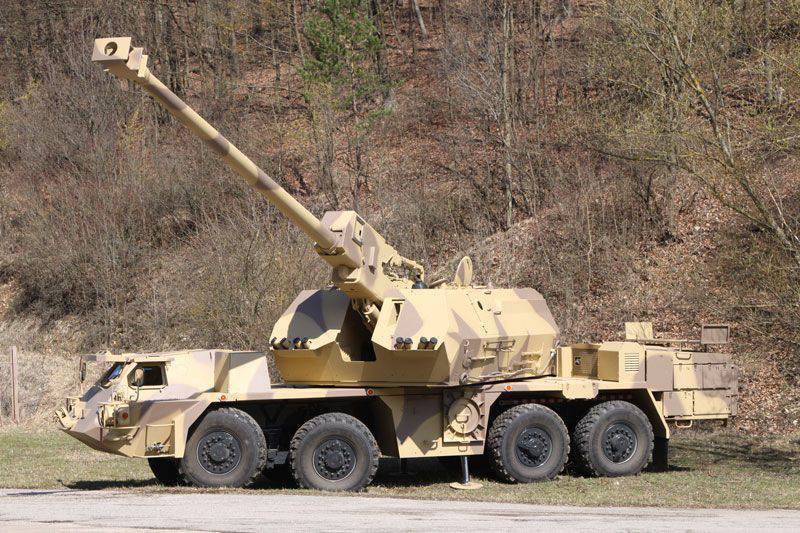
Konstrukta Defense has installed a 155-mm / 45 cannon on its Zuzana howitzer, then a new 155 / 52 cannon, the system is currently offered with two different power units
Designed to meet the needs of the Serbian army, the Nora K-1 howitzer from Yugoimport is still waiting for the first order from the national army
The newest version of the howitzer under the designation B-52 KI is characterized by a fully enclosed turret, thus completing its transition from a gun mounted to a truck to a wheeled self-propelled howitzer in the classic sense. The third generation Nora has been refined in many ways. The reliability of the artillery system itself was improved, as well as the accuracy thanks to a new MSA, an improved navigation system and an initial velocity radar. Hydraulic bearings received shock absorbers, and the crew was reduced to four people. The maximum range when firing long-range projectiles is 41,2 km, and when firing active-reactive ammunition with a bottom gas generator, it is expected in the 56 km region.
Providing a rapid-reaction self-propelled howitzer force was the goal of South-Import when, in 2011, it proposed a system based on the 122-mm D30J gun. Using the experience gained in creating Nora, the Serbian company developed the Soko SP RR 122 ACS, consisting of a FAP 2228 6x6 truck with a STANAG standard 1 protected cab and an artillery tower installed behind the cab. The crew of the 4 man is divided into pairs, the driver and commander are sitting in the cockpit, and the shooter and loader in the tower. The maximum range of high-explosive fragmentation projectiles is 17,3 km, the same, but with a bottom notch - 21 km. In order to destroy moving targets, the gun can also fire a laser-guided Kitol-2M projectile. Electro-hydraulic magazine and semi-automatic loading system with pneumatic rammer allow you to quickly charge the shells and charges. The quick preparation time for firing is provided by hydraulic supports and an SLA, which can be integrated into the combat control system.
In the late 70s, Denel, a South African company, developed the G6 SP self-propelled howitzer based on a specially designed 6x6 chassis. Its tower is armed with the same 155/45 gun as the towed G5. The original G6 howitzer with manual loading was purchased by the armies of South Africa, Oman and the UAE. Her crew consisted of 4 gunners and a driver. In 2003, Denel Land Systems launched the G6-52 with a 52 caliber gun, which had a smaller ammunition load (40 versus 50), located in two roundabout stores at the rear of the tower, one with shells and one with charges. The automatic loader guaranteed a rate of fire of 6 rounds per minute, while the calculation was reduced to three people. The G6-52 howitzer is equipped with the INS / GPS navigation system and the AS2000 advanced target designation and guidance system, which allows you to open fire from the gun 60 seconds after receiving the task. Although the G6-52 turret was mounted on a modernized version of the original G6 chassis, it can also be mounted on other chassis, mostly tracked. At G6-52, also known as Renoster, orders from foreign countries have not yet been received. As for India, Denel is blacklisted there, and when it is allowed to return to the fight for orders, guess it. The artillery system in the T6 tower configuration could also be used to create a tracked SG based on the national chassis (Bhin based tank Arjun was proposed a few years ago).
Although Norway decided to exit the program, BAE Systems still has a contract for Archer 48 systems, signed with Sweden
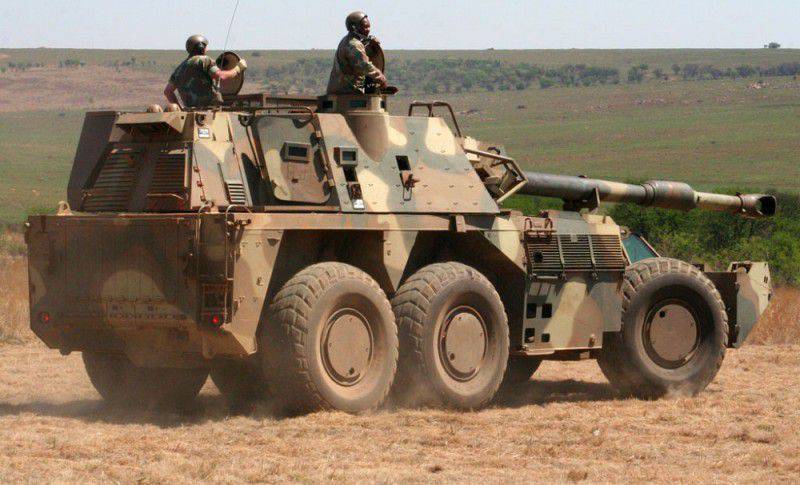
G6 / 45 is in service with the United Arab Emirates. The 52 caliber version is at the advanced prototype stage and is currently awaiting its first customer.
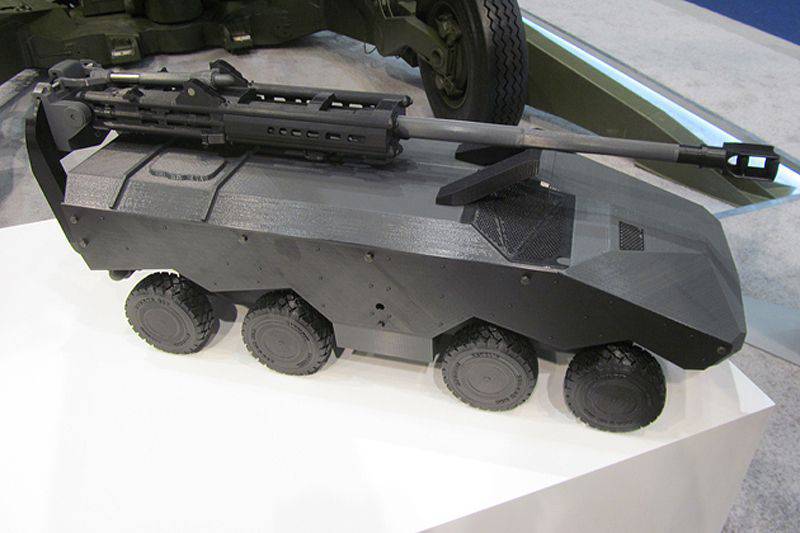
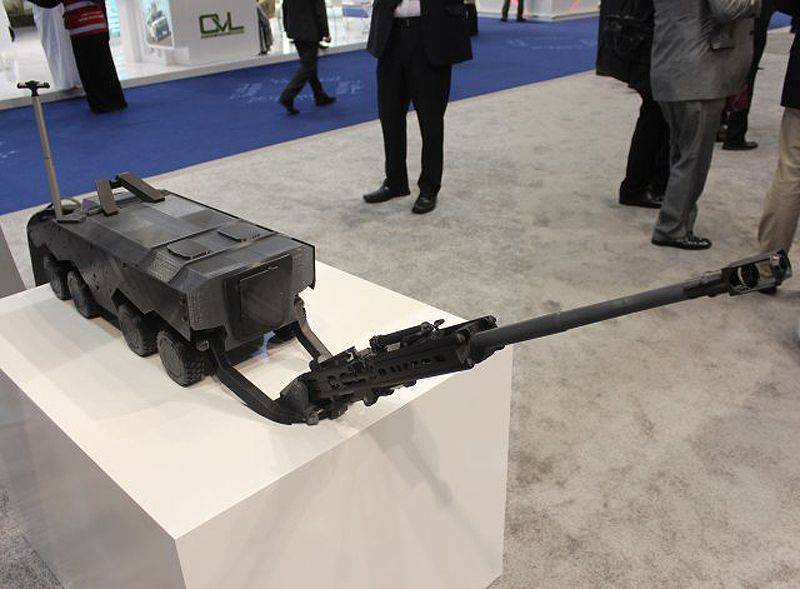
Using the Enigma 8x8 armored vehicle developed by Emirates Defense Technology as the base platform, BAE offered an unusual solution for simplifying the integration of its ultra-light howitzer M777 155 / 39 with this machine. In the photo a model with a gun in the positions for shooting and hiking
In the middle of the 90-x, studies were conducted on the possibility of installing a Bofors FH77 B05 52 towed gun on a wheeled self-propelled howitzer. The system received the designation Archer. In order to obtain maximum throughput on the snowy lands of Northern Europe, a modified Volvo A30E 6x6 articulated car was selected. The main features of the system are as follows: full automation (Archer serves the calculation of three people from inside the protected cabin), MRSI mode up to six shots, time to take a position on the move and open fire for less than 30 seconds and protection against ballistic and mine threats. Howitzer can be thrown by plane A400M. Its range is 40 km of conventional ammunition and 50 km of guided projectiles such as Excalibur. Under this program, Norway joined Sweden in 2007, the system received the official designation FH 77 BW L52. The first Archer 24 systems ordered in 2010 were delivered to the Swedish Defense Property Administration in September 2013, but three months later, Norway, which also signed the 24 system, decided to leave the program. Its decision was based on unnamed reasons that did not allow the system to comply with the Norwegian requirements. This led to the signing of a revised contract between the Office and BAE Systems Bofors on a supply schedule for Sweden only. The delivery of the last batch is scheduled for the beginning of 2016. To date, there are no details about the penalties. The Archer Howitzer is also a possible candidate for the Danish M109 replacement program.
Rheinmetall used the experience of developing the PzH 2000 cannon and its Unterluβ barrel and created an autonomous turret with the same 155 / 52 cannon capable of firing X-NUMX km with improved projectiles with a bottom gas generator and more than 42 km with V-LAP projectiles with jet propulsion. The automatic loading system allows you to ensure the rate of fire of six rounds per minute or 52 rounds per hour in continuous firing. In MRSI mode, up to five shells can be shot. When using a special machine to replenish ammunition can be loaded in five minutes 75 shells and 40 charges to them. Having onboard a ring laser gyroscope with GPS, an automatic instrument pickup system, an AS40 command and control system, a howitzer can shoot the first projectile 4000 seconds after a stop and withdraw from a position only 60 seconds. Rheinmetall announces a circular likely deviation of 30% from range when shooting at a low trajectory. The tower was developed in the hope of an Indian contract for artillery systems and for this purpose was installed on the G0,6 South African chassis, giving birth to the RGW6 (Rheinmetall Wheeled Gun) system, but like other companies, Rheinmetall was on the Indian blacklist. Currently, the program is stopped, but Rheinmetall is ready to start again if the customer shows interest in the system. Since the tower is autonomous, it can be mounted on wheeled and tracked chassis.
Launched with two research programs, partly funded by the Italian Ministry of Defense, the development of the Centauro 155 / 39 LW howitzer by Oto Melara is currently halted due to the scarce financial capacity of the Italian army. The system was shown at Eurosatory 2012. It is a tower armed with a lightweight 155 / 39 cannon mounted on the Centauro 8x8 chassis, although the serial system can be mounted on the Centauro 2 chassis. The barrel length was chosen based on the assumption that the gun would fire mainly Vulcano ammunition (see the “Controlled Ammunition” part), which can fly in 55 km in a controlled manner. Fully automatic loading was adopted for the system; 15 shells are laid in the rear of the tower, while the corresponding charges are placed in the chassis. The system automatically selects the type of projectile and charge in accordance with the data received from the commander or the shooter. Eight shots per minute are guaranteed, the system is also capable of shooting up to 4 shots in MRSI mode. The consumption of ammunition is reduced when firing guided ammunition; however, the ammunition replenishment machine with a conveyor overloads a full ammunition of shells and charges in less than 10 minutes. The gun has a jet muzzle brake of the “salt” type, which significantly reduces the recoil forces; modeling showed that support when shooting is optional. Tests at the moment passed the gun itself, ammunition, charges and automatic loading system. Oto Melara is ready to re-start development and even install the tower on another chassis, if a foreign customer requires it.
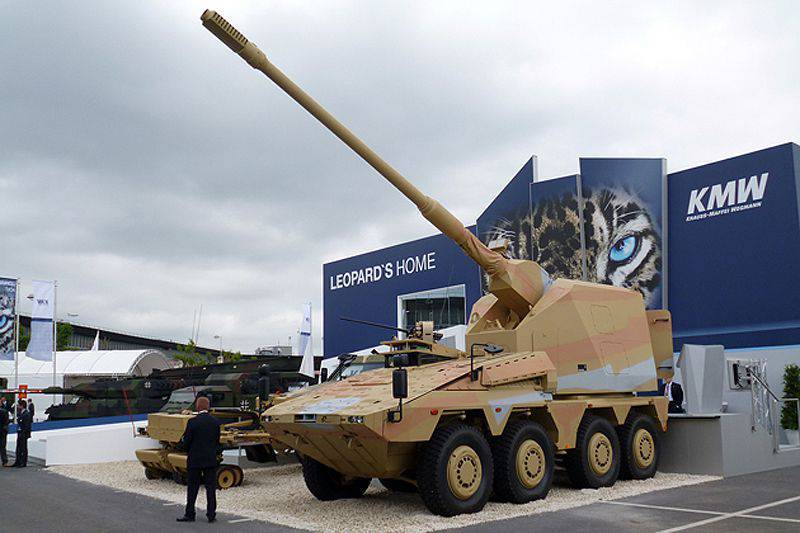
A stand-alone Artillery Gun Module can be installed on both tracked and wheeled chassis, for example, in the photo it is installed on the Boxer. The system has already been described in “Part of 1. Hell on caterpillars "
155 caliber cannon mounted on truck chassis
At the beginning of 90, Giat Industries (now Nexter) began developing an artillery system on a truck that remained at the prototype stage until the French army decided to test it. The system, designated Caesar (CAmion Equipe d'un Systeme dArtillerie - a truck equipped with an artillery system), was eventually received an order; The French government decided to load the national industry and ordered five howitzers. The French army was not particularly enthusiastic about this concept at the time, but ten years later, the situation has changed significantly. She also ordered the Caesar 72 system at the end of the 2004 of the year, deployed them in Afghanistan and Mali and is now fully convinced of the advantages of this mobile gun. In Afghanistan, the 155 / 52 howitzer Caesar made it possible to cover the entire area of responsibility of the French contingent with an area of 15x40 km, operating from Nihrab in the north to Gwang in the south. Good air transportability and also their accuracy contributed to the deployment of systems. The first shooting at long ranges requires only two projectiles in order to correct the fire with a circular deflection (CEP) 100 meters, after which 10 projectiles are fired to neutralize the target. While in Afghanistan, the Caesar howitzers worked with advanced operational bases, in Mali, tactical mobility was a key element. Working in two pairs, Caesar SGs were based in Gao, from where they could reach any place in the area of operation for two days.
The fully digital Caesar system allows you to quickly complete a fire mission: one minute ready to fire, six shells fired in a minute, and ready to move in 45 seconds. Ceasar French howitzers are installed on Sherpa 5 6x6 chassis manufactured by Renault Truck Defense, their cabins are optionally protected with additional booking kits. Currently, Caesar systems sold abroad are based on the Soframe / Unimog 6x6 chassis. This configuration was adopted by Saudi Arabia (a customer that Nexter never called, but this is a secret known to everyone) for 100 systems designed for the National Guard. Some of them were collected at a local enterprise. Saudi Arabia also bought 60 LMS Bacara (BAlistic Computer ARtillery Autonomous) plus six Caesar simulators.
Thailand ordered six Caesar howitzers, and Indonesia ordered 37 systems in 2012 to equip two artillery battalions. In November 2014, Saudi Arabia funded a rearmament program for the Lebanese army. The deal, signed with France, provides for the delivery of 28 Caesar howitzers. Nexter clearly does not take its eyes off the Indian Mounted Gun System mobile SPG program. To this end, the French company teamed up with Larsen & Toubro and Ashok Leyland Defense and offered the Caesar system mounted on the Ashok Leyland 6x6 Super Stallion chassis. Another agreement was signed with the Brazilian company Avibras for the installation of the Caesar system on the chassis used for the Astros 2020 MLRS. In addition to integration on new platforms in order to expand export potential, the Caesar howitzer is being qualified with guided projectiles, for example, Spacido from Nexter and Excalibur from Raytheon (will are described in the appropriate section of this series). The possibility of increasing the level of protection of the crew by means of additional booking of the cabin, as well as increasing the ammunition load on board (now 18 rounds) is being considered. Some of these solutions may impair air transportability, but some potential buyers do not require this capability. In addition to India, Nexter views the Middle and Far East as the most promising markets for its Caesar system, which could also compete for the replacement of M109 howitzers in Denmark.
Having acquired Soltam, the Israeli Elbit inherited with it the Atmos 155-mm ACS. Work was carried out on the modernization of this system, upgraded loader system, increased performance and accuracy. Elbit currently offers the 155-mm / 52 version, equipped with a horizontal sliding gate and semi-automatic loader system. The platform can be either a 6x6 truck or 8x8; the first shot can be fired 20-30 seconds after the stop. In order to maximize the accuracy of the instrument is installed radar measuring the initial speed. The Israeli company is also ready to install an 39 caliber cannon on the Atmos. The Atmos D30 variant was developed to provide a mobile system to those countries that still have a Soviet-made 122-mm gun in service. Unlike the 155 mm cannon, the 122 mm caliber cannon with a semi-automatic loading system can fire on all 360 ° (due to the small recoil forces).
The recent success of the 155-mm Atmos SG in the marketplace is related to an unnamed African country and Southeast Asia. There, Thailand chose an 39 caliber art mount on the 6x6 chassis. Judging by the available information, the assembly of the first sample was carried out in Israel, and the remaining five systems are manufactured and assembled in Thailand.
Elbit Systems is very actively promoting its Atmos system. It is the basis for the Polish ACS Kril, developed by Huta Stalowa Wola. The upgraded gun system was installed on a Jelcz 6x6 truck chassis, specially designed for Kryl, which guarantees the possibility of being transported by a C-130 aircraft. The dry weight of the system is about 19 tons; The delivery of the first systems was scheduled for mid-year 2015. Currently ordered 24 serial systems Kryl (division kit, three batteries of eight guns) with the first deliveries expected in 2017 year. For the Indian bid, Elbit Systems has teamed up with Bharat Forge, but, like all other bidders, is awaiting the publication of a request for proposals. Atmos 18 systems are already in service with Romania, where they were installed on the Romanian 26.360 DFAEG 6x6 chassis and were named Atrom. The main contractor for these systems is the Romanian company Aerostar SA of Romania. ACS Atmos is not adopted by the Israeli army, but is in service with several countries. Azerbaijan bought five systems, Cameroon 18, Uganda 6 and Thailand 6 with the possibility of additional orders. Looking at the successful development of mobile systems, the Chinese company Norinco developed its own 155-mm system SH1, presented in 2007 year. It is based on the 6x6 chassis with a huge rear coulter with hydraulic drive. The howitzer has an autonomous orientation system, a radar measuring initial speed, an automated MSA and a semi-automatic loader system. The system is mainly designed for sale abroad, but no order has been received for it to date.
The Centauro 155 / 39 LW howitzer from Oto Melara was introduced in 2012 year. It embodies the company's experience in the development of ground and ship systems. The program for it has been stopped due to the limited budget of the Italian army.
Easy mobile installations
The development of 105-mm artillery systems mounted on the truck chassis began for various reasons: the need for fire support of special and airborne forces on the one hand and on the other hand the need to increase the number of mobile installations within limited budgets.
In the United States, the company Mandus Group, following the first path, has developed a hybrid technology of "soft" rollback. In her gun, the hydraulic system before the shot moves in front of the swinging part of the gun carriage, which reduced the recoil force on the trunnion from approximately 13 tons of typical 105-mm guns to just 3,6 tons. This yes plus a relatively small mass of the gun allows you to create many viable platforms. In April, 2013 passed the Ford F-250 chassis system using four telescopic side supports. At the moment, the system, which received the designation Hawkeye, is armed with an 105-mm / 27 barrel from the M102 cannon, but the company is ready to install various barrels upon the customer's request. With the M102 barrel, the Hawkeye howitzer has a range of conventional 11,5 km ammunition and 15 km active-rocket projectiles and can also fire in direct-fire mode. A long rate of fire is six shots per minute, the maximum rate of fire 10-12 shots. The azimuth angles of the gun are all 360 °, the vertical angles are 5 ° / + 72 °. A huge advantage over other guns lies in its exceptional simplicity, since it is assembled from just 200 parts, which is 10 times smaller than that of the L119 / M119 Light Gun. Hawkeye is equipped with a digital SLA, which electronically controls azimuth angles (horizontal) and locations (vertical). Mandus Group worked with Mack Defense to produce a lightweight mobile solution, which consists of installing guns on the chassis of an Sherpa armored car. The module with the 24 round of ammunition is placed behind the cab, the whole system weighs less than 9 tons, that is, it can easily be transferred by helicopter. Fire tests conducted in the 2012 year showed that the Hawkeye / Sherpa system can shoot even without supports, which reduces the deployment time to 15-20 seconds.
In 2012, the Mandus Group began development, the goal of which is to create a top of the mast and a retractable system capable of accepting 155-mm 39 and 52 caliber barrels. Reducing the recoil forces allows you to install such artillery systems on a five-ton cargo chassis. Mandus is currently working on several projects that will soon be implemented, but no details on them have yet been submitted.
ATMOS from Elbit Systems, available with barrels of different lengths, is installed on various trucks. In the photo the gun on the chassis 6x6 firing
The acquisition of Soltam led Elbit Systems to the artillery business. The company uses its extensive experience in the field of electronic components to integrate its products into artillery systems, such as the ATMOS wheeled howitzer
The Kryl prototype is presented by Huta Stalowa Wola at Milipol 2014. Essentially, the ATMOS artillery system from Elbit Systems, installed on the Polish truck 6x6
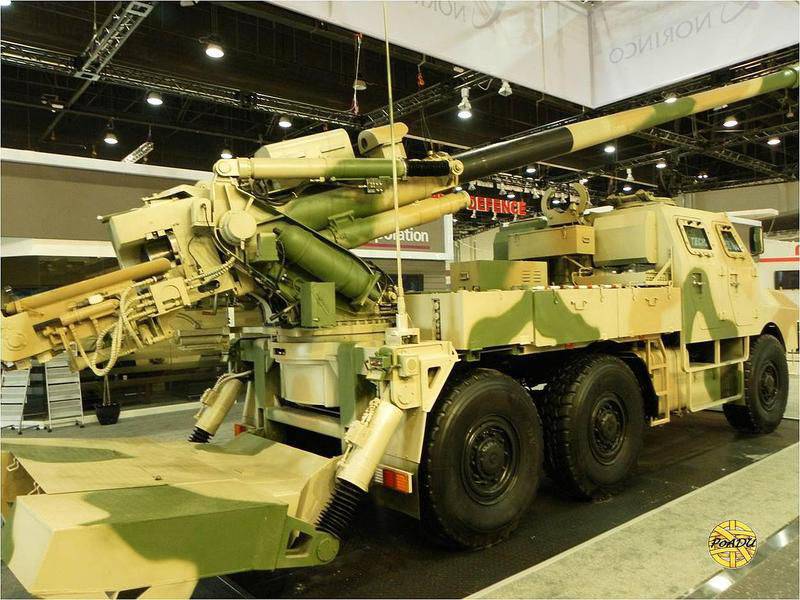
In an effort to stay in trend, the Chinese company Norinco has developed a SH1 howitzer, which has not yet found orders in the export market
One of the first companies to install the 105-mm towed gun on the chassis of the truck, was South import. This system has received the designation M09. It is based on the 6x6 chassis with an armored five-seater cab installed ahead, which has a level of protection that corresponds to the 1 STANAG level. The artillery unit is a refinement of the M56A1 towed howitzer with an 105 / 33 barrel, which Southwestern no longer produces. This allows you to shoot all the ammunition developed for the American howitzer M101. The maximum range is 15 km when firing a high-explosive fragmentation projectile of increased range and 18 km when firing a projectile with a bottom gas generator. Manual loading, as well as lowering of two main supports, installed in front of two rear axles, and two additional supports in the rear. The shield provides partial protection for the calculation of the weapon against ballistic threats. The ammunition is stored in two armored boxes mounted behind the cab. The control system of this installation allows you to quickly open fire. Combat weight SG M09 12 tons.
A prototype of the EVO-105 ACS developed by the South Korean company Samsung Techwin was shown at the end of the 2011 year. On the chassis was installed the upper part of the American towed howitzer M101. The 105-mm / 22 weapon system can only fire backwards. Mobile SAU is equipped with the same OMS as the tracked K9 Thunder. Judging by the latest information, the Korean army intends to acquire 800 howitzer EVO-105, installed on the five-ton chassis KM500 6x6. First shipments are expected in 2017.
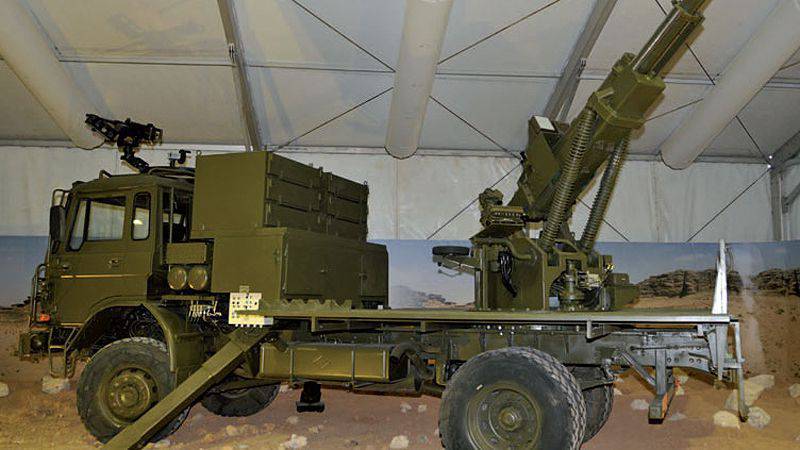
At the exhibition SOFEX 2014 was presented a mobile artillery system consisting of an 105-mm towed gun mounted on the 4-X4 chassis. Phased revision of this system is in progress.
At the SOFEX 2014 exhibition, the Jordanian company KADDB presented a similar system, but based on the M102 cannon with a longer barrel of the 32 caliber; maximum range is 11,5 km. It was installed on a DAF 4440 biaxial chassis, which is equipped with a base plate that allows you to shoot back in the ± 45 ° sector. The base plate is powered by an electro-hydraulic system (with a manual backup branch), which also drives vertical guidance with angles in the –5 ° / + 75 ° sector. Behind the cab there is a shell box for 36 shots; in the shooting position, two pillars descend behind the first bridge; also in order to increase the working space for the calculation of the three people the sides of the truck are lowered. The car is equipped with a GPS / inertial navigation system with an odometer, which, during the first fire tests, allowed the system to be deployed in three and a half minutes and leave the position 45 seconds after the last shot. The first stage has now been completed, and the first prototype has been delivered to the Jordanian army for evaluation tests. At the second stage, the system will be installed on a pallet for quick transfer from one platform to another, and the SLA will also be integrated. It is also expected to increase the amount of ammunition.
Mandus Croup offers its 105-mm small recoil cannon mounted on a Mack Defense chassis. Mandus is currently working on a number of new programs, including an 155-mm cannon with very little recoil forces.
The Chinese company Norinco offers two lightweight SH2 and SH5 systems based on a single 6x6 chassis. The first with the 122-mm D30 gun, while the second, intended for foreign customers, is armed with an 105 / 37 gun. The calculation, located in the front protected four-seater cabin, serves the gun on the rear platform. Equipped with automated guidance guidance systems and hydraulic supports in the rear, the SH2 and SH5 systems can quickly take, shoot and leave the position (for the 105-mm version, the 40 number of seconds is removed from the position after the last shell has been shot). The SH2 system has a maximum 27 km range with an active jet missile with a bottom gas generator, a 18 km shell with a bottom notch, while the SH5 system shoots a 15 km shell with a bottom notch and a 18 km shell with a bottom gas generator. The system can shoot the American M1 ammunition at a distance of 12 km. In order to increase the tactical mobility of the chassis, both axles are controlled. The SH2 artillery system is most likely intended for the Chinese army, although it is not clear whether it has been adopted, while the relatively inexpensive version of the SH5, intended for export, is still waiting for its customer.
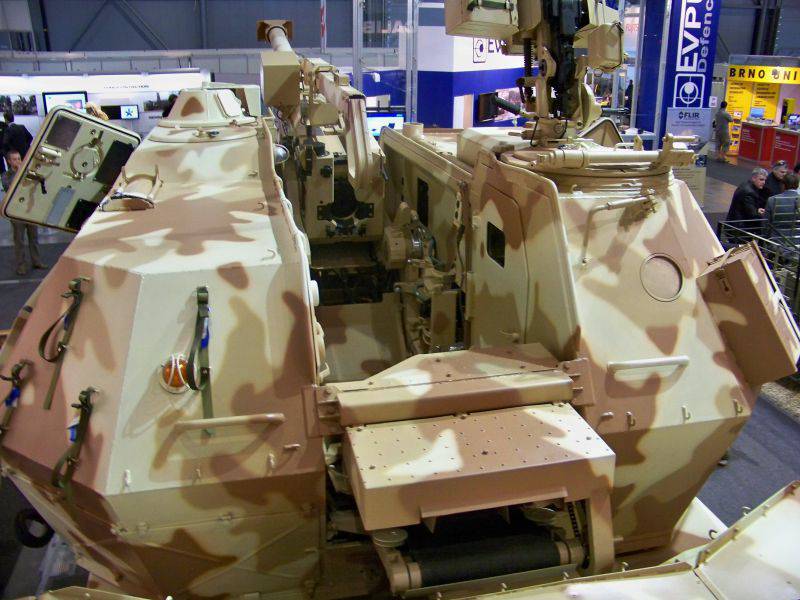

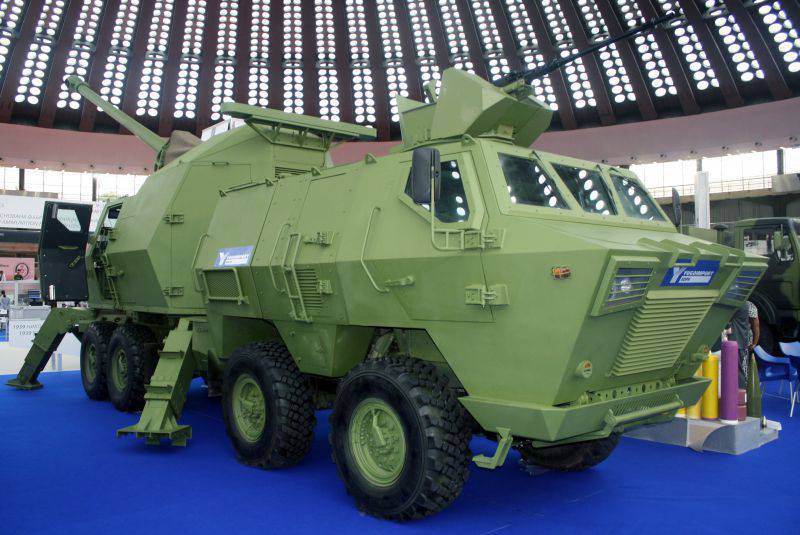
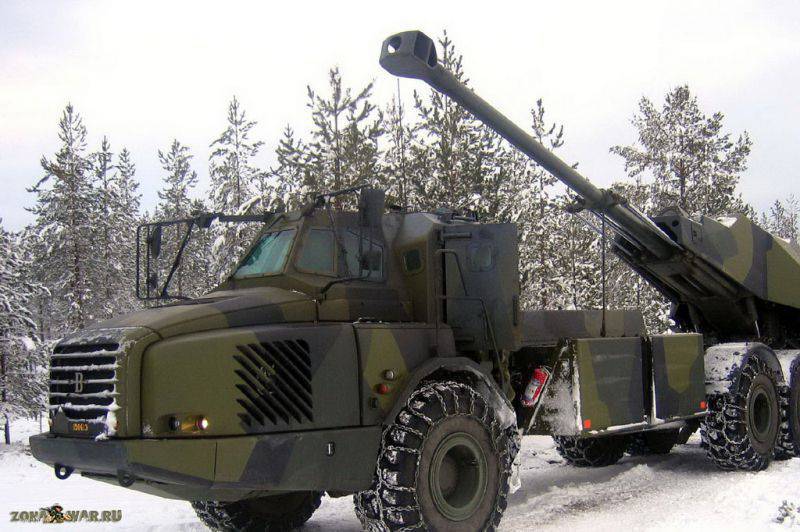
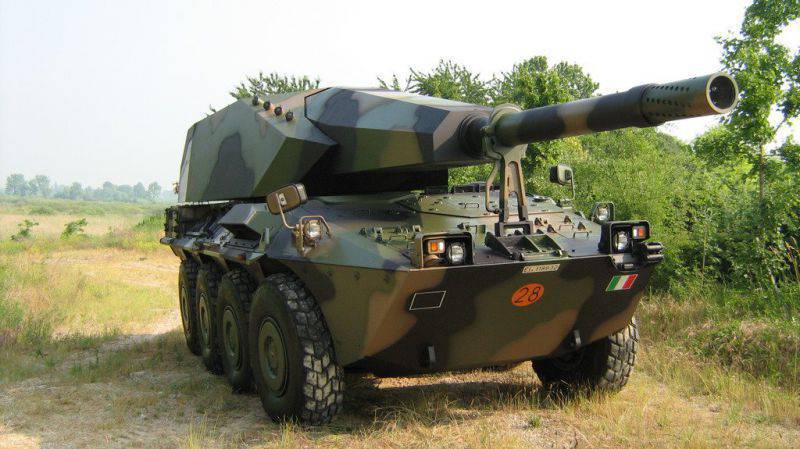
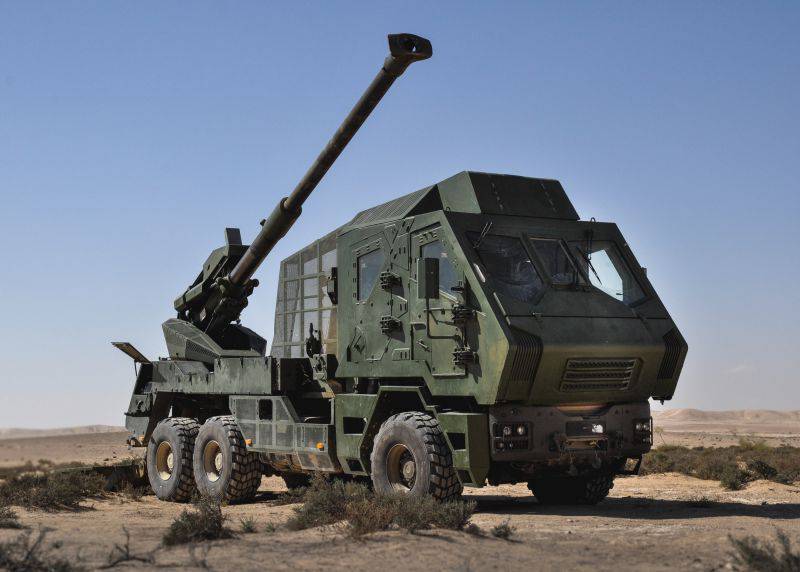
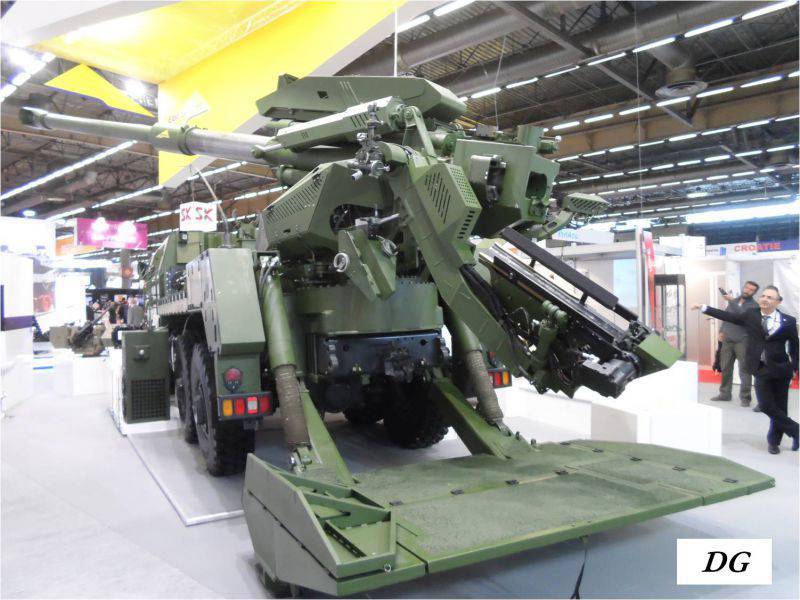
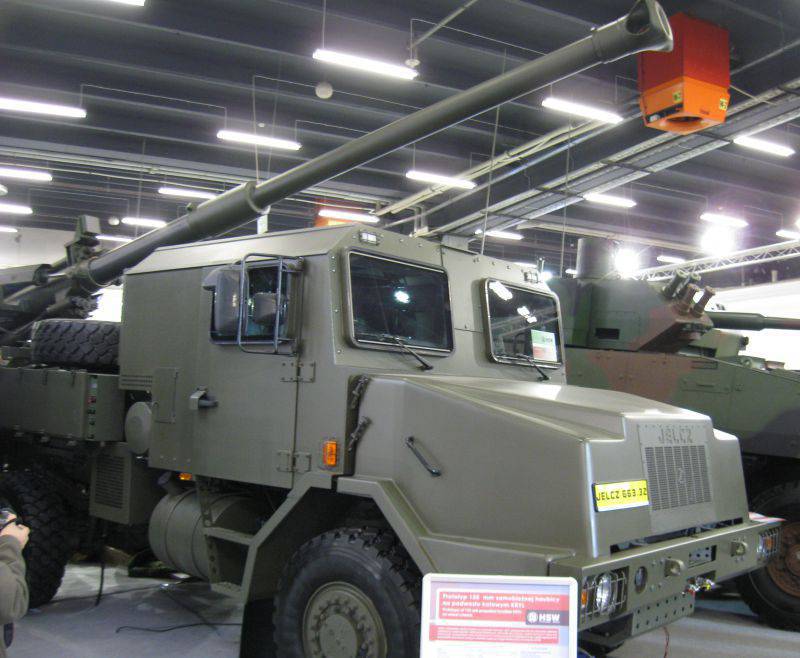
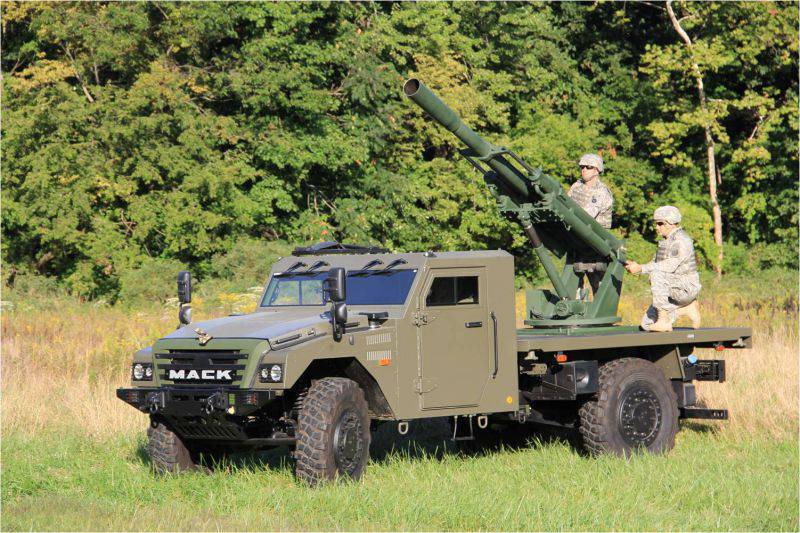
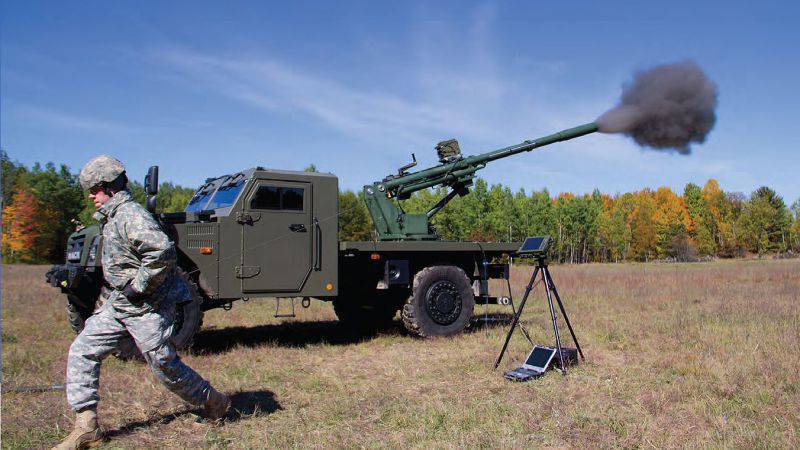
Information